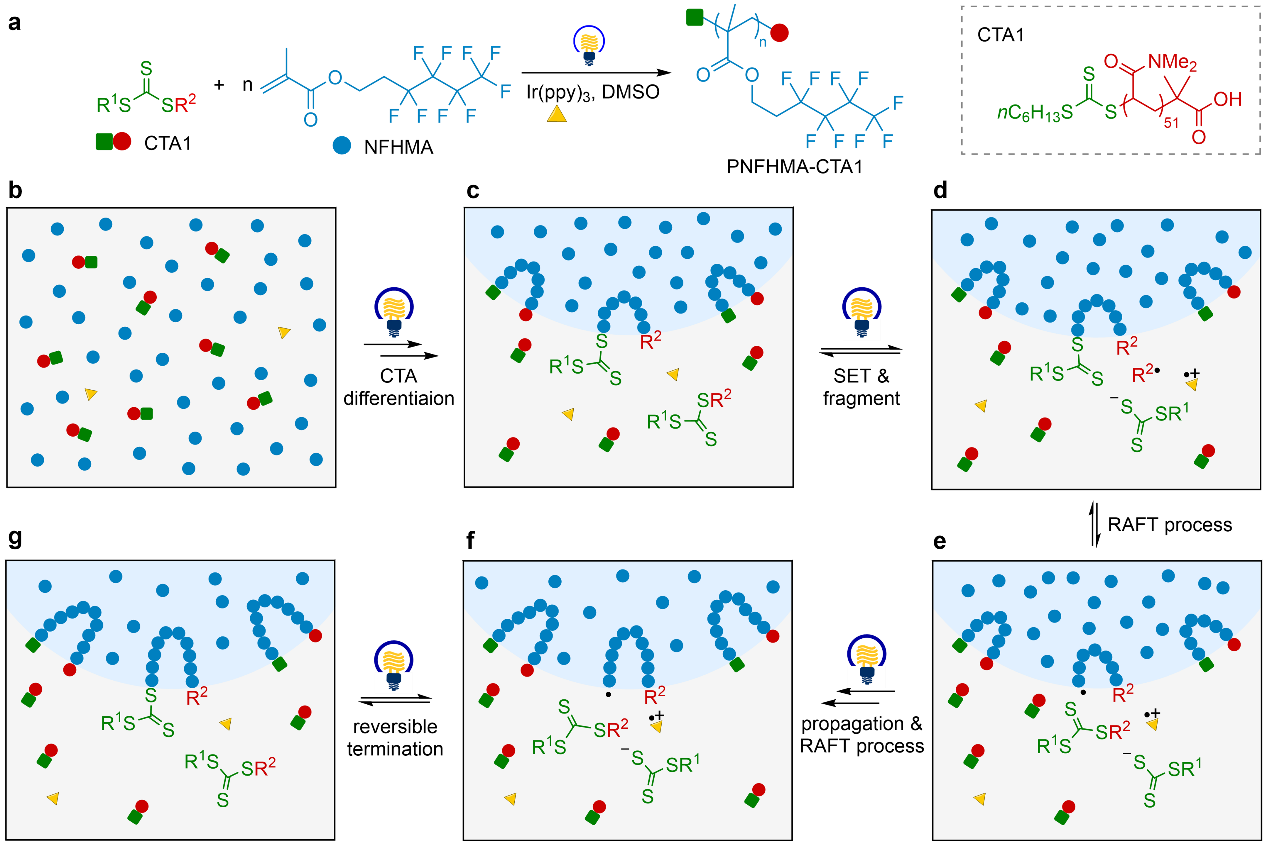 +565 975 658
+565 975 658
 info@premiumcoding.com
info@premiumcoding.com
 Monday - Friday, 8.00 - 20.00
Monday - Friday, 8.00 - 20.00
Since the 1950s when Szwarc raised the concept of living polymerization, the relating procedures shared a common feature: the molecular weight of the polymer is determined by the ratio of monomer to initiator (or chain transfer agent, CTA). Under this prerequisite, each polymer chain would possess a moiety of the initiator or the CTA. However, this rule posed great restriction on the preparation of specific kinds of polymers. For example, in the synthesis of UHMW polymers, the concentration of initiator or CTA is kept at ultra-low range (Fig. 1a). This brings unavoidable issues on the livingness of the polymerization, leading to broad polydispersities. Since UHMW polymers usually possess outstanding thermostability, mechanical performances and other excellent properties, they have great potential in the application on diverse fields such as self-assembly and self-healing. Therefore, it has been a challenging yet critical task to overcome the limit of the conventional living polymerization and precisely synthesize UHMW polymers. Recently, PolyMao group developed a novel CTA-differentiation strategy, facilitating the preparation of well-defined UHMW polymers. (Fig. 1b)

Figure 1. Conventional chain propagating mode and the CTA-differentiation strategy
The cell differentiation process in nature works where a portion of stem cells keep proliferating and differentiating, enabling the generation of tissues through subsequent propagation, while the remaining stem cells lie dormant, but can be activated by particular stimuli to regulate homeostasis via cell functions throughout lifetime. The researchers envisioned that if the controlling agents could differentiate into two groups ‒ a propagating group (PG) in charge of chain growth, and a supporting group (SG) remaining dormant and responsible for reversible-deactivation of propagating chains to maintain the livingness of polymerization, the cooperative roles of PG and SG agents would enhance the livingness of RDRP with a high ratio of monomer to the growing chain, hence facilitate the generation of UHMW polymers (Fig. 2). Meanwhile, fluoropolymers possess remarkable attributes such as high hydrophobicity, tunable lipophilicity and outstanding thermal and chemical stability, which have stimulated broad applications. They envisaged that the fluorine-fluorine interaction between the fluorinated monomer and the in situ generated fluoropolymers could promote the migration of monomer and CTA, thus implementing the differentiation process of CTA. The distinct chain growth mode breaks the upper limit of molecular weight in conventional living polymerizations by leading the monomers to be selectively polymerized on a particular small portion of the initiators, achieving the successful preparation of UHMW polymers of fluorinated (meth)acrylates and acrylamide (Mn > 106 Da); meanwhile, as assisted by the interaction between the PG and SG, the obtained polymers displayed dramatically narrow dispersities (Đ ~ 1.1) and excellent chain-end fidelity, facilitating the precise synthesis of UHMW block copolymers.

Figure 2. The mechanism of CTA-differentiation strategy
Moreover, this work provided comprehensive mechanistic demonstrations and properties characterizations. They found that the thermostability of the UHMW polymer is much superior (100 ℃ higher in the decomposition temperature) than the related counterparts with normal molecular weights, revealing the outstanding advantages provided by this kind of materials.
The CTA-differentiation strategy presented a novel vision in living polymerization, providing a practical and robust method for the synthesis of polymers with complex structures. Related researches are now undergoing. This work has been published in Angew. Chem. Int. Ed. (DOI 10.1002/anie.201912698). The authors are Honghong Gong, Yu Gu, Yucheng Zhao, Qinzhi Quan, Shantao Han and Mao Chen. See details:
We are welcome for people with interests to contact us for joining our group (master, PhD or postdoctor).
Email: chenmao@fudan.edu.cn
Get to know us better now!

Wechat:FDUMMers
Search!
Search across our website
Revenant @ 2018 by fudan | All Rights Reserved
Powered by Weicheng

